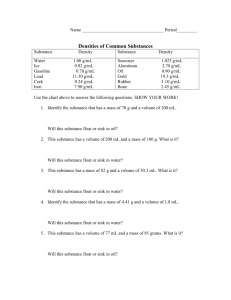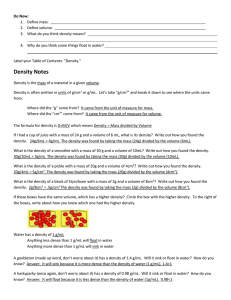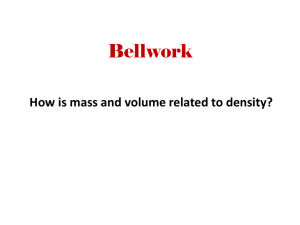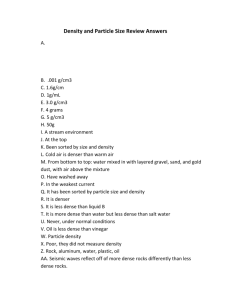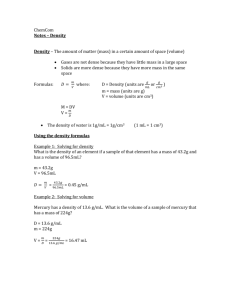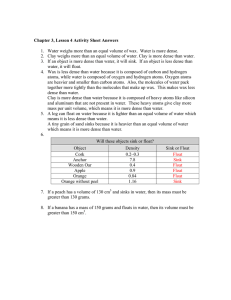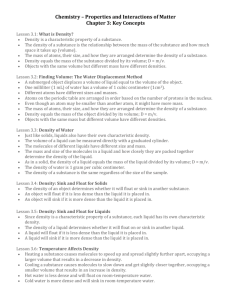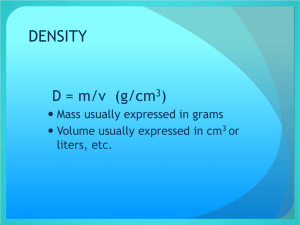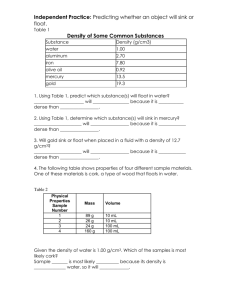Reg Rev #1 Prologue
advertisement
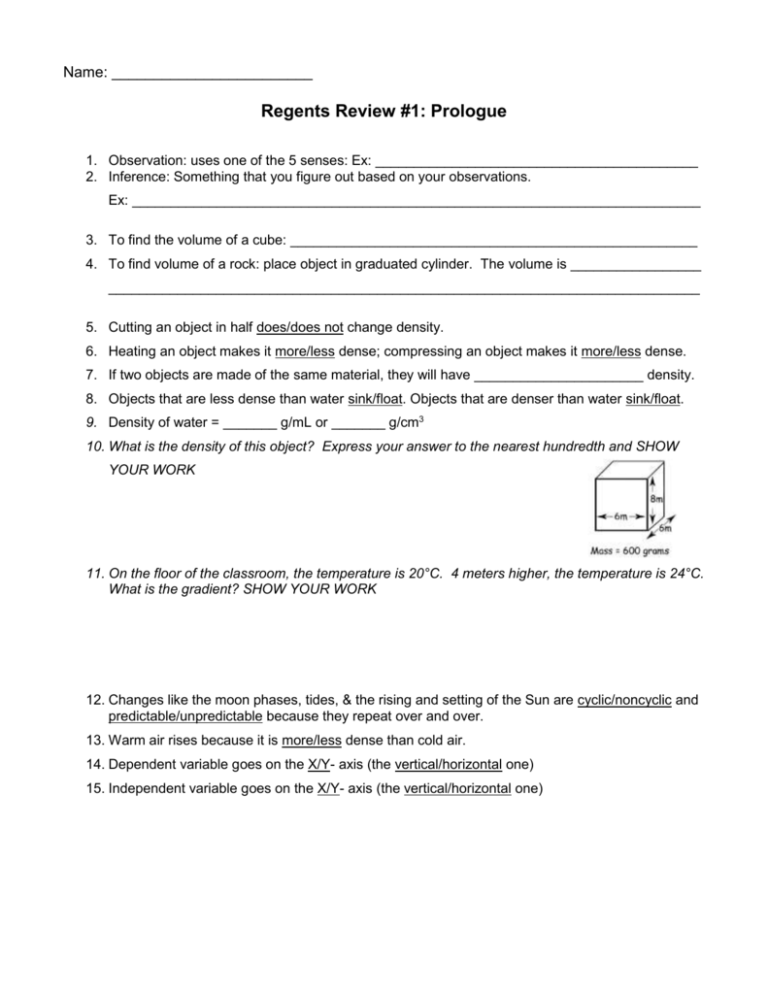
Name: ________________________ Regents Review #1: Prologue 1. Observation: uses one of the 5 senses: Ex: __________________________________________ 2. Inference: Something that you figure out based on your observations. Ex: __________________________________________________________________________ 3. To find the volume of a cube: _____________________________________________________ 4. To find volume of a rock: place object in graduated cylinder. The volume is _________________ _____________________________________________________________________________ 5. Cutting an object in half does/does not change density. 6. Heating an object makes it more/less dense; compressing an object makes it more/less dense. 7. If two objects are made of the same material, they will have ______________________ density. 8. Objects that are less dense than water sink/float. Objects that are denser than water sink/float. 9. Density of water = _______ g/mL or _______ g/cm3 10. What is the density of this object? Express your answer to the nearest hundredth and SHOW YOUR WORK 11. On the floor of the classroom, the temperature is 20°C. 4 meters higher, the temperature is 24°C. What is the gradient? SHOW YOUR WORK 12. Changes like the moon phases, tides, & the rising and setting of the Sun are cyclic/noncyclic and predictable/unpredictable because they repeat over and over. 13. Warm air rises because it is more/less dense than cold air. 14. Dependent variable goes on the X/Y- axis (the vertical/horizontal one) 15. Independent variable goes on the X/Y- axis (the vertical/horizontal one) Regents Review #1: Prologue (KEY) 1. the sky is cloudy. 2. Since it is cloudy, it will probably rain later. 3. length x width x height 4. the amount the water level rises. 5. does not 6. Heating an object makes it less dense; compressing an object makes it more dense. 7. the same 8. Objects that are less dense than water float. Objects that are denser than water sink. 9. Density of water = 1 g/mL or 1 g/cm3 10. First figure out the volume: V=LxWxH V = 6m x 6m x 8m = 288m3 Then use the density formula: D=M D = 600g V 288m3 11. Gradient = change in field value Distance 12. cyclic and predictable 13. less 14. Y- axis (the vertical one) 15. X- axis (the horizontal one) D = 2.08g/m3 G = 24ºC – 20ºC 4m G = 4ºC 4m G = 1ºC/m
